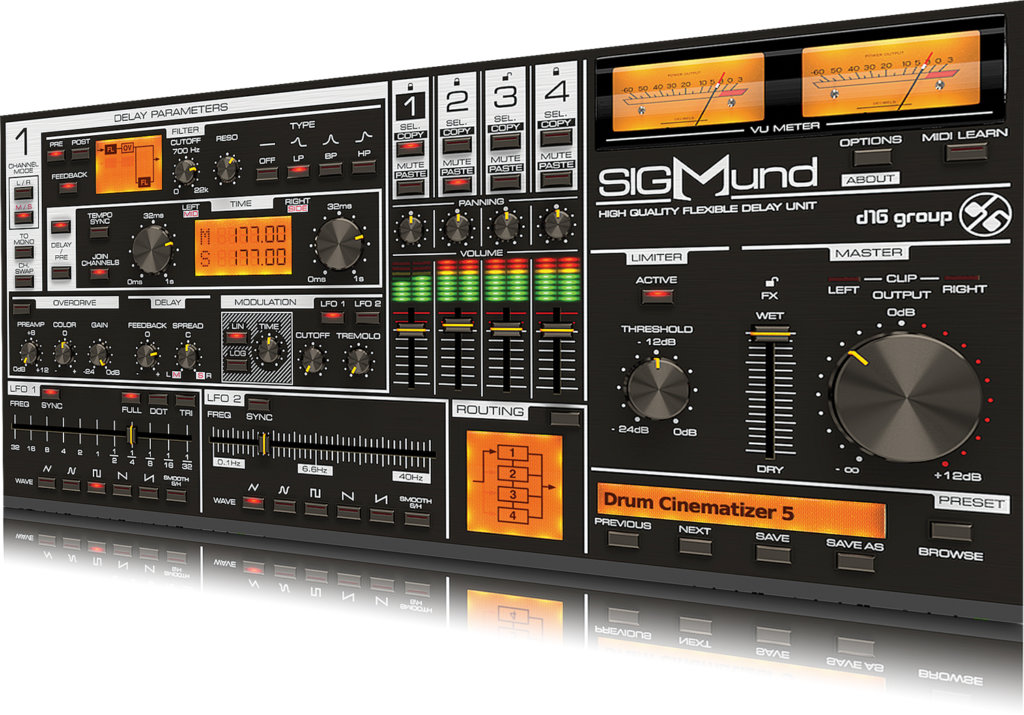D16 GroupAudio Sigmund Review
Delay plug-in effects can be divided into two extremes. The first is the super-simple delay that offers delay time, feedback control and maybe a modulation control to colour the sound of the delay over time. Then you have the all-bells-and-whistles delay processors that have more than these basics, providing many other effects offered by other […]
Delay plug-in effects can be divided into two extremes. The first is the super-simple delay that offers delay time, feedback control and maybe a modulation control to colour the sound of the delay over time. Then you have the all-bells-and-whistles delay processors that have more than these basics, providing many other effects offered by other plug-ins you may also own. Sigmund definitely offers the latter as it includes four separate delay lines, M/S processing, distortion, filtering, limiting, tremolo and various other sound-shaping tools.

Manufacturer: D16 GroupAudio Software
Price: €69
Contact: contact@d16pl
Web: www.d16.pl
Sigmund is quite a beast to get to grips with, and although its architecture is quite complex, the various routing options available are graphically represented through signal block diagrams. This includes switching the pre-delay filter to being pre- or post-distortion for example. The delay line routing is also interesting and offers many combinations to choose from.
Our tests began by exploring the preset selection. This is important as many people will just audition presets in the context of their mix, stopping when something seems to aurally slot in. There are quite a few presets on offer, and although the collection isn’t the biggest we’ve experienced, it has sufficient variation for numerous different situations.
We then used a looping snare-hit sample as a trigger sound to test the programming side of Sigmund as well as its sound-design possibilities. This is when the exact architecture of Sigmund becomes a little less obvious to understand. The graphical positioning of the GUI as a whole doesn’t relate to the running order of the signal chain. We therefore had to read the manual to fully grasp this.
Between the routing options, independent L/R or M/S and general layering possibilities with Sigmund’s four delay lines, there’s a high level of richness available. This works very well for both intricate decorative delays within a mix as well as being strong enough to stand alone when creating new sounds. The only negatives we had with Sigmund were operational – for instance, elements like automation need setting up rather than being ready to use out-of-the-box. But they can be saved as new defaults, so with a little work, Sigmund can be a highly creative and fluid plug-in to use.
Verdict
A sonically interesting delay machine with many different potential applications for mixing and sound design.



